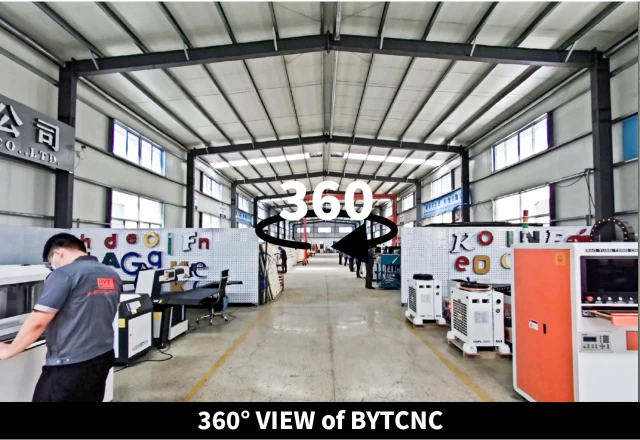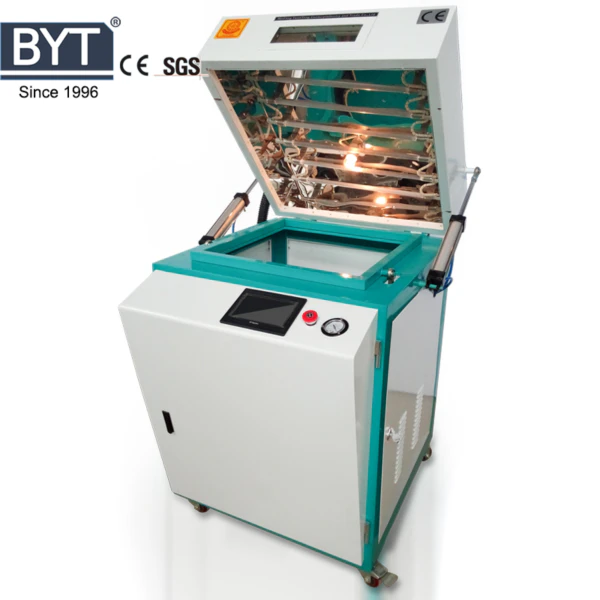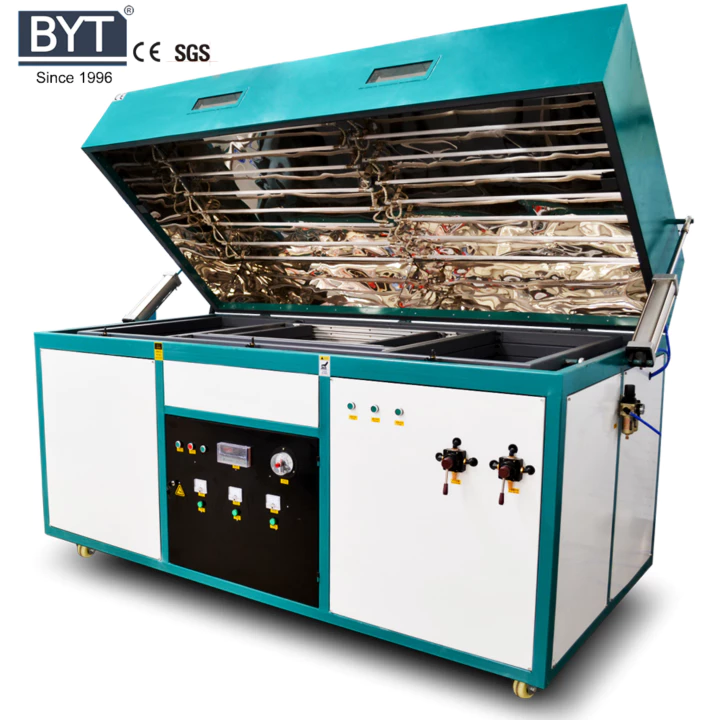Vacuum Forming Machine: A Comprehensive Guide
Vacuum forming machines, also known as thermoforming machines, are versatile pieces of equipment that utilize heat and pressure to mold plastic sheets into various shapes. These machines are widely employed in a diverse range of industries, including packaging, food and beverage, electronics, and medical devices.
The Process of Vacuum Forming
The vacuum forming process involves several key steps:
Sheet Heating: Plastic sheets, typically made from thermoplastics like PET, PVC, or HIPS, are fed into the machine and heated to a pliable state using various heating methods, such as electric resistance heaters, gas flames, or infrared lamps.
Drape and Molding: The softened plastic sheet is then draped over a forming mold, which is the shape the final product will take.
Vacuum Application: A vacuum is applied to the space between the mold and the plastic sheet, drawing the softened plastic tightly against the mold’s contours.
Cooling and Ejection: Once the plastic has conformed to the mold, it is cooled, typically using fans or chilled water, to solidify the shape. The finished product is then ejected from the mold.
Types of Vacuum Forming Machines
Vacuum forming machines come in various configurations to suit different production needs and product designs. Common types include:
Semi-automatic Vacuum Forming Machines: These machines require manual intervention for loading and unloading parts, making them suitable for low-volume production runs.
Automatic Vacuum Forming Machines: These machines automate the loading, unloading, and trimming processes, offering higher production rates and reduced labor costs.
Pressure Forming Machines: These machines utilize compressed air instead of vacuum pressure to force the plastic sheet against the mold, ideal for thicker and more rigid materials.
Applications of Vacuum Forming Machines
Vacuum forming machines are employed in a wide spectrum of industries for producing a vast array of products, including:
Packaging: Trays, blisters, clamshells, and other packaging solutions for food, beverages, consumer goods, and medical products.
Food and Beverage: Cups, lids, containers, and other food-grade packaging items.
Electronics: Protective covers, housings, and components for electronic devices.
Medical Devices: Trays, enclosures, and disposable medical components.
Automotive: Interior trim panels, light covers, and other automotive parts.
Toys and Games: Action figures, packaging, and various toy components.
Benefits of Using Vacuum Forming Machines
Vacuum forming machines offer several advantages over other plastic forming methods:
Versatility: They can produce a wide range of shapes and sizes from various thermoplastic materials.
Cost-effectiveness: They are relatively inexpensive compared to other forming methods, making them suitable for both small and large production runs.
Design Flexibility: They can incorporate intricate designs, textures, and undercuts into the molded products.
Thin-walled Products: They can produce thin-walled parts with excellent strength-to-weight ratios.
Material Efficiency: They minimize material waste during the forming process.
Factors to Consider When Choosing a Vacuum Forming Machine
Several factors should be considered when selecting a vacuum forming machine:
Production Volume: The machine’s production capacity should match the anticipated production volume.
Product Size and Complexity: The machine’s forming area and capabilities should accommodate the size and complexity of the desired products.
Material Compatibility: The machine should be compatible with the types of thermoplastics to be used.
Automation Level: The level of automation required for loading, unloading, and trimming should be considered.
Budget: The cost of the machine and associated tooling should align with the budget.
Conclusion
Vacuum forming machines play a crucial role in various industries, offering a versatile, cost-effective, and efficient method for producing a diverse range of plastic products. With their ability to create complex shapes, thin-walled parts, and intricate designs, vacuum forming machines continue to be a valuable asset in the manufacturing landscape.



